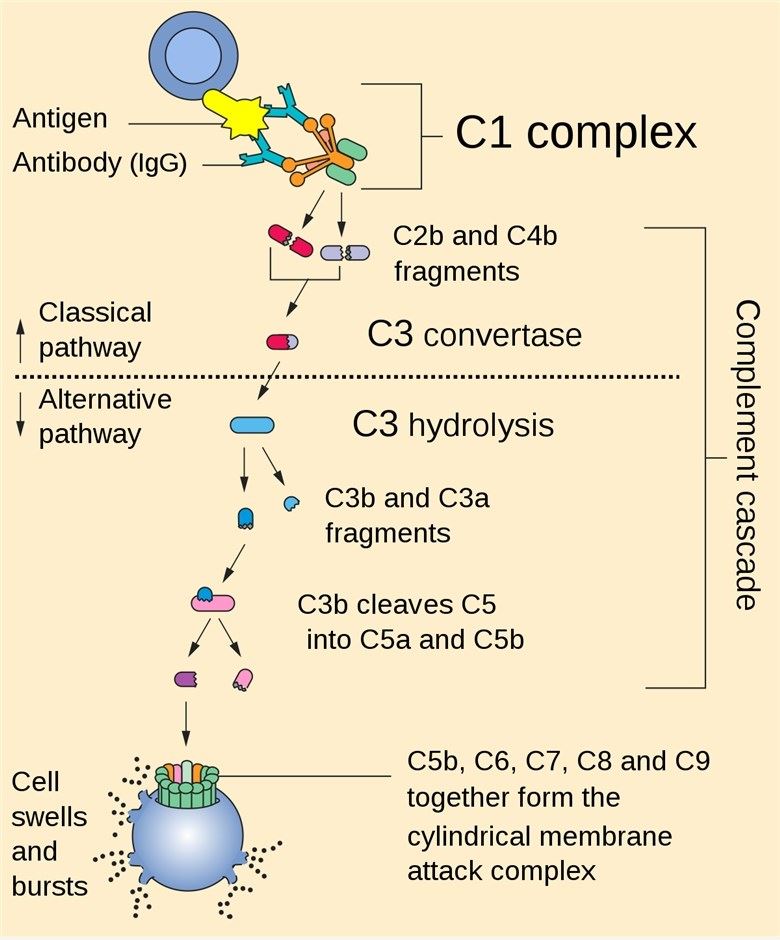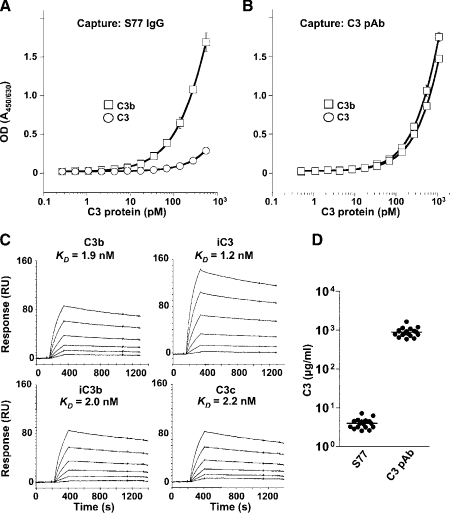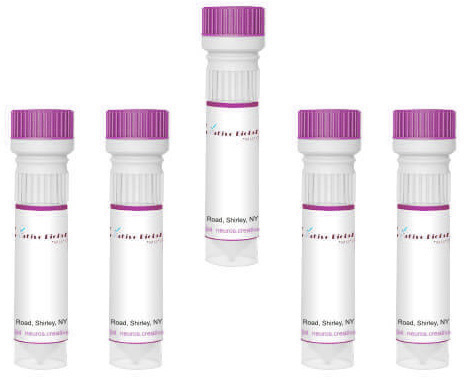Product List Background C3b Functional Service
Background
Complement component 3 (C3) is a key member in the complement system, owning to the manifold biological activities of its activation fragments, C3b, which anchors the generation of convertases affecting C3 and C5 activation. C3b is produced by proteolysis of its anaphylatoxin domain of C3, which activates a stable thioester bond, causing the covalent attachment of C3b to cell-surface or protein-surface hydroxyl groups by transesterification. The cleavage and activation of C3 expose binding sites for a variety of proteins, including factors B, H, and I, complement receptor 1 (CR1, CD35), decay-accelerating factor (DAF, CD55), properdin, membrane cofactor protein (MCP, CD46) and so on. C3b binds to these proteins in different configurations and forms complexes causing the activation, amplification, and regulation of the complement response.
Importantly, C3b plays an important role in all three pathways of complement activation. In the classical (CP) and lectin (LP) pathways, C3b gives one of two noncatalytic subunits of the C5 convertase, and in the alternative pathway (AP), it provides the non-catalytic subunits of both C3 convertase and C5 convertases.
 Fig.1 C3b is a role of alternative pathway.Distributed under public domain, from Wiki, without modification.
Fig.1 C3b is a role of alternative pathway.Distributed under public domain, from Wiki, without modification.
C3b Functional Service
Creative Biolabs offers a broad spectrum of C3b-focused products, encompassing anti-C3b antibodies, anti-C3b aptamers, ELISA kits, and recombinant C3b proteins. These carefully crafted reagents are instrumental in enabling the identification and analysis of interactions involving C3b proteins and diverse molecular entities. They play a vital role in progressing research focused on formulating therapeutic strategies for various diseases.
 Fig.2 Development of a phage display antibody that specifically targets C3b without cross-reacting with native C3.1
Fig.2 Development of a phage display antibody that specifically targets C3b without cross-reacting with native C3.1
Assessing C3b functionality typically involves analyzing its involvement in the alternative pathway of the complement system through the use of products such as anti-C3b antibodies in applications like WB, ELISA, and IP to gauge C3b expression. ELISA kits are utilized to quantify C3b protein levels in various biological samples, offering insights into C3b's operational dynamics. Recombinant C3b protein helps clarify its receptor binding structure. The current gold-standard detection methods leverage labeled C3b-specific antibodies and flow cytometry to assess complement deposition on bacteria. For instance, anti-C3b antibody specifically interacts with deposited C3 products on staphylococcal surfaces, facilitating the measurement of complement fixation on wild-type cells that express a full array of immune evasion proteins.
Creative Biolabs offers a suite of C3b-functional services, such as C3b binding assays, C3b activity evaluations, hemolysis tests, and C3b deposition assays. Our team of specialists provides customized support for researchers, aiding in experimental design, data analysis, and interpretation to ensure the success of your research endeavors.
Reference
-
Katschke, Kenneth J., et al. "Structural and functional analysis of a C3b-specific antibody that selectively inhibits the alternative pathway of complement." Journal of Biological Chemistry 284.16 (2009): 10473-10479. Distributed under Open Access license CC BY 4.0, without modification.


 Datasheet
Datasheet Fig.1 C3b is a role of alternative pathway.
Fig.1 C3b is a role of alternative pathway. Fig.2 Development of a phage display antibody that specifically targets C3b without cross-reacting with native C3.1
Fig.2 Development of a phage display antibody that specifically targets C3b without cross-reacting with native C3.1
